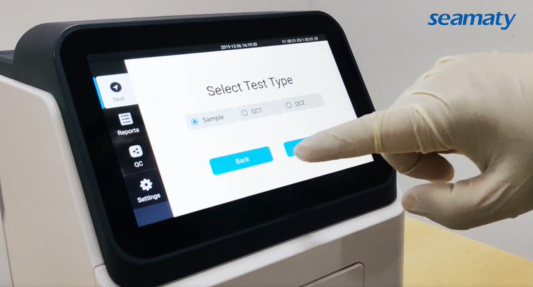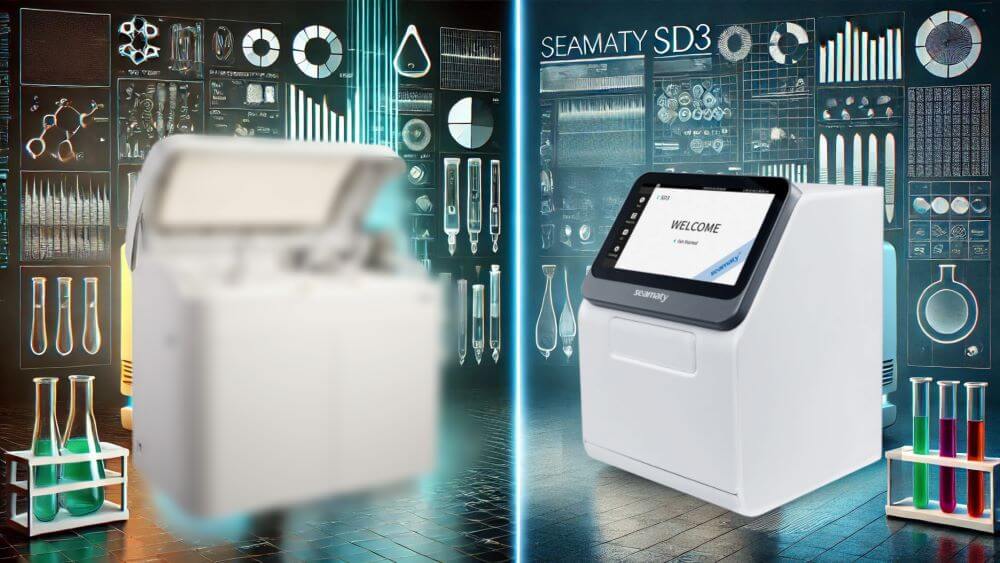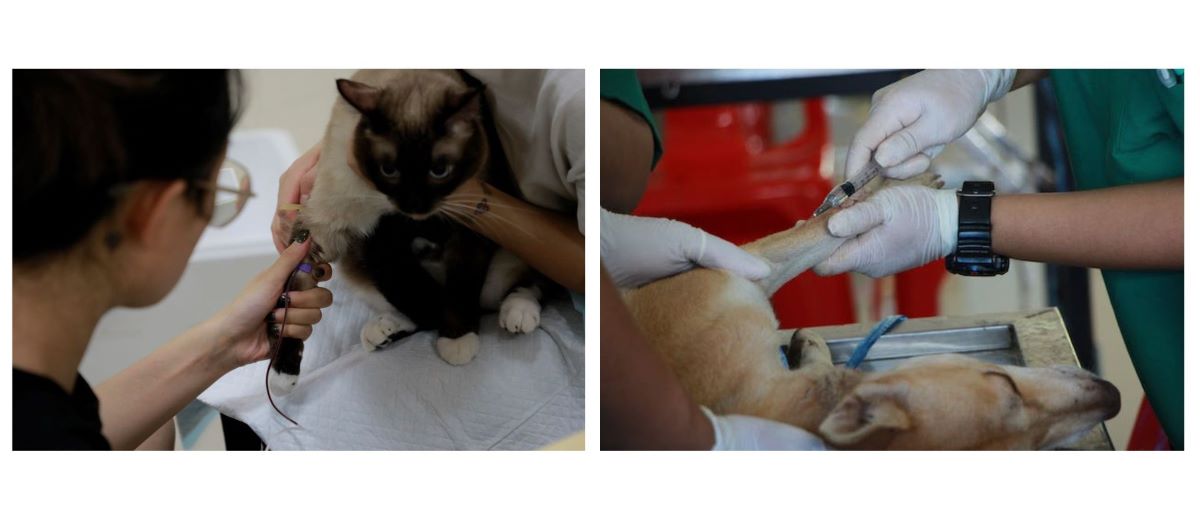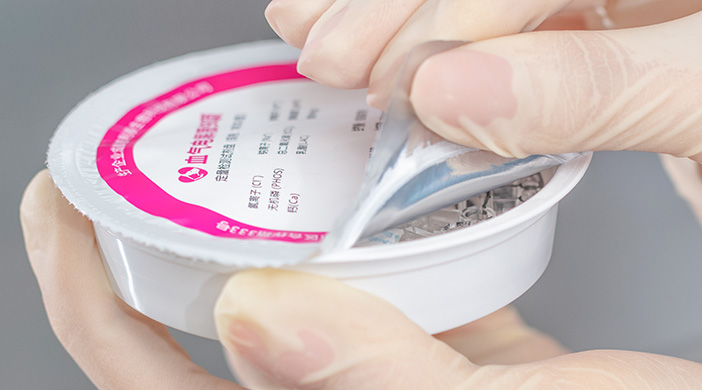Biochemical analyzers are devices that automate the operation of biochemical analysis processes using physical, chemical, and computer technologies. The automated process of a biochemistry analyzer can include: identification and sample delivery, loading of samples and reagents, charging reaction and detection conditions (e.g., wavelength, temperature, time), data processing, and system maintenance.
Classification of biochemistry analyzers can be divided into fully automated and semi-automated types according to their degree of automation. It can be further classified into single-channel and multi-channel according to the number of simultaneous measurement items. According to the different reagent systems used, it can be divided into closed system and open system. According to the working mode of the instrument, it can be divided into continuous flow type, centrifugal type, discrete type and dry sheet type.

Testing speed of biochemistry analyzer
Testing speed is one of the important parameters for users to choose a biochemical analyzer. It reflects the ability of the instrument to process samples per unit of time. It is generally expressed in terms of the number of tests completed per hour.
It should be noted that when a biochemistry analyzer is equipped with an electrode section, its test speed can be calculated independently. Especially when making comparisons between multiple devices, it is appropriate to compare the biochemical and electrode sections separately. There is no uniform method for calculating the testing speed of biochemistry instruments. The speed indicated by the instrument manufacturer is for reference only.
In practice, factors affecting the testing speed of biochemical analyzers also include the time required for automatic cleaning of the pipeline or the completion time of the first test result.
In this article, the test speed of Beckman DXC series biochemistry analyzer is used as an example. 990 tests/hour for DXC 600; 1440 tests/hour for DXC 800.
Optical parameters of biochemistry analyzer
In addition to the characteristics of spectroscopic technology, the number of monochromatic light wavelengths in a certain wavelength range of the instrument should be able to meet the needs of laboratory testing. Usually in the wavelength range of 300-800nm. The number of fixed wavelengths should be above 11.
Instrument detector absorbance range of 2.0 or more, has been able to meet the needs of the actual clinical work. And the colorimetric cell optical diameter can directly affect the absorbance worth the effective range and resolution. When the optical diameter is longer, it is easy to get better sensitivity and accuracy. However, the volume of reagents and samples will increase.
Reagent position and sample loading of biochemistry analyzer
Currently, fully automated biochemistry analyzers used in clinical laboratories generally use multi-channel analysis. Its reagent bits should be able to meet the needs of routine biochemical test items. When the laboratory uses dual reagents, the reagent space is required to increase accordingly when the instrument is in operation. If you need to load reagents during the operation of the instrument, most of the equipment requires access to a special reagent loading program and complete reagent loading in between determinations.
Sample loading on biochemistry analyzers can be done using sample trays and sample holders. The sample tray can be loaded with a larger number of samples at a time. This is mostly used by small and medium-sized biochemistry analyzers. Loading samples via sample racks is suitable for laboratories to automate sample transfer because of its flexibility. This is also the main form of sample loading for large biochemistry analyzer equipment today. For ease of use, many instruments have dedicated lanes or sample locations for emergency sample testing.
Take Beckman DXC series biochemistry analyzer as an example. It has a total of 59 reagent positions. The sample rack is used to load samples and has a dedicated lane for emergency sample testing.
Measurement Systems for Biochemistry Analyzers
A measurement system is a complete set of measuring instruments and other equipment assembled to perform a specific measurement.
A complete and effective biochemical analysis system consists of a combination of test instruments, reagents, calibrators, and associated operating procedures, quality control procedures, and equipment maintenance procedures. A complete analytical system has well-defined system performance validation and method characteristics. This defines for the laboratory the scope of application of the analytical system, sample types, supporting reagents and calibrators, and method characteristics related to the quality of test results (linearity range, precision, accuracy, interference factors, and reference range, etc.).
The use of a complete and effective analytical system is the basis for ensuring the quality of test results in clinical laboratories. For clinical laboratories, the purpose of ensuring the integrity and validity of the analytical systems used is to ensure a grasp of the performance of the analytical methods used. This also provides test applicants with test results and data of clear quality standards.
Biochemistry analyzer original reagent kit
According to the national management requirements for
in vitro diagnostic products (IVD), in order to obtain a product registration certificate, biochemical reagents must provide clear product standards and be tested and qualified by relevant units.
For a biochemical reagent (usually a kit) that has obtained a registration certificate, has clear product standards and its test results can meet the specified quality requirements, the integrity of its system should be ensured. This includes the reasonable use of reagents and specified calibrators, and the test operation in strict accordance with the operating procedures.
Summary
Biochemical analyzer is a device that automates the operation of biochemical analysis process by using physical, chemical and computer technologies. According to this paper, the complete analytical system includes: test speed, optical parameters, reagent positions and sample loading, environmental requirements, measurement system, and original reagent kits, etc. Therefore, it is very important to improve the analysis system of biochemical analyzer.



